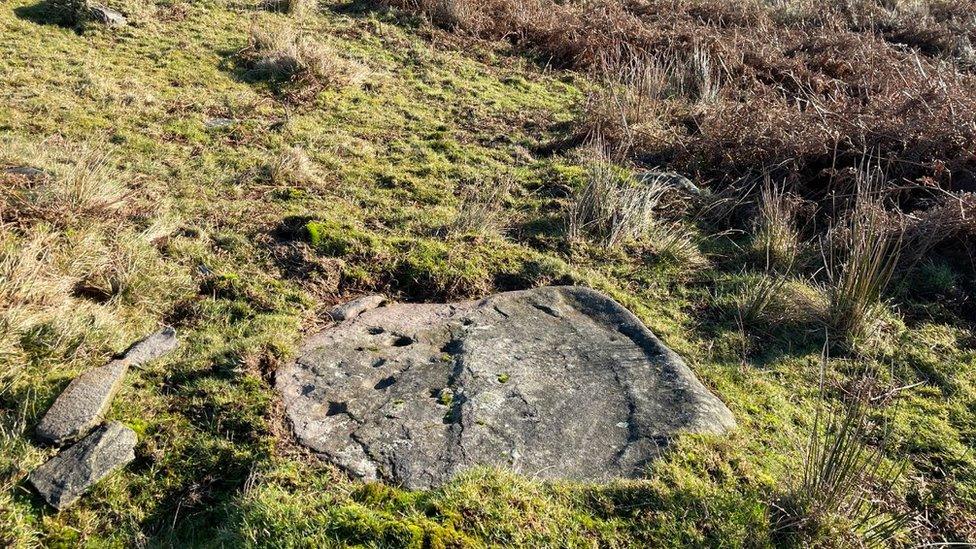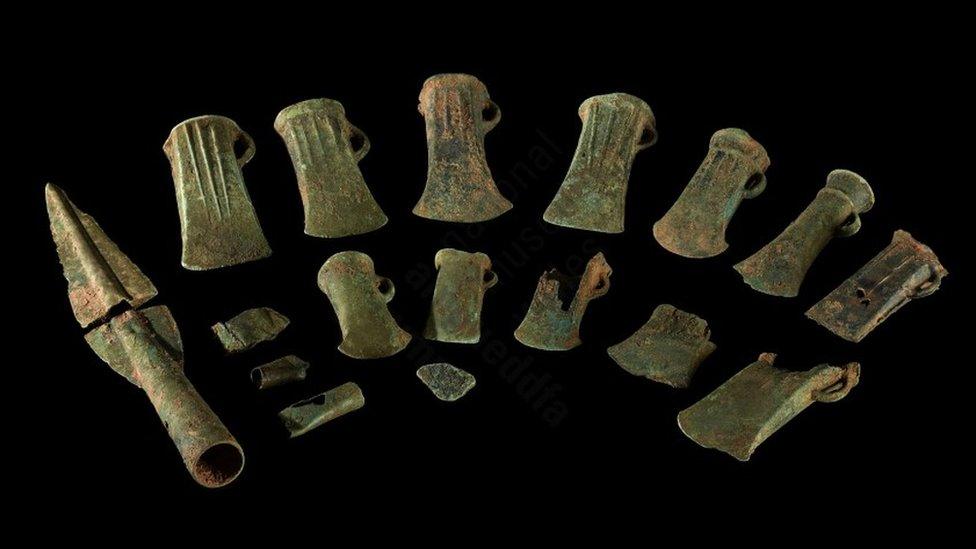Man filmed himself damaging ancient Eglwysilan monument
- Published

The buried monument is two large sandstones with "cup marks" cut into their upper surfaces
A man who filmed himself damaging a monument up to 4,500 years old has been ordered to pay for its restoration.
Heritage officials said Julian Baker ruined part of the artwork beyond repair and it is now "lost forever".
Baker, 52, of Abertridwr, Caerphilly, admitted deliberately exposing and damaging the Bronze Age monument believed to date back as far as 2500BC.
Baker, who lives near the site, posted video on Facebook of him damaging the artwork on Eglwysilan mountain.
In the first prosecution of its kind in Wales, Baker was told to pay £4,400 compensation for disturbing the ancient cairn field and damaging the rock art.

The monument before the damage was done
He was also given a four-month custodial sentence, suspended for two years at Newport Magistrates Court.
The buried monument is two large sandstones with "cup marks" cut into their upper surfaces dating back to the Bronze Age.
Experts were puzzled at the "enigmatic" meaning of the cup mark but believe the stones "may have acted as route markers or demarcated territorial boundaries".
Baker filmed himself excavating the monument and separated the rock art panel from its stone.
The charges said that Baker "executed unauthorised work affecting a scheduled monument" in January.
They said he "executed works, namely disturbed the ground exposing an ancient monument."

Julian Baker was given a four-month custodial sentence suspended for two years
The second charge said Baker acted to "destroy or damage an ancient protected monument" on the same date.
"This damage is a serious incident at a rare class of prehistoric monument in Wales," said a spokesperson for Welsh government heritage body Cadw.
"Significant archaeological information has been lost forever, and although some evidence may remain, the significance and value of the part of the monument damaged has been significantly diminished.
"We welcome the court's decision in this case, the first we have submitted under section 28 of the Ancient Monuments and Archaeological Areas Act 1979."
Related topics
- Published30 May 2022

- Published12 July 2023

- Published4 January 2022
